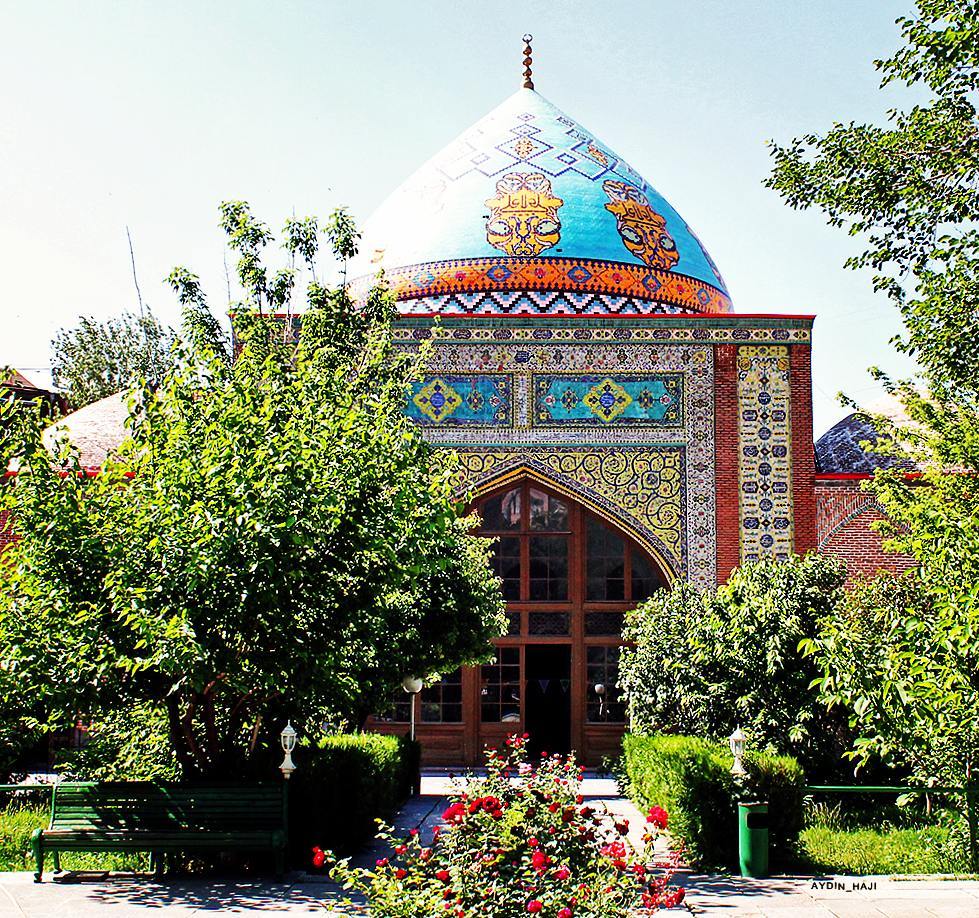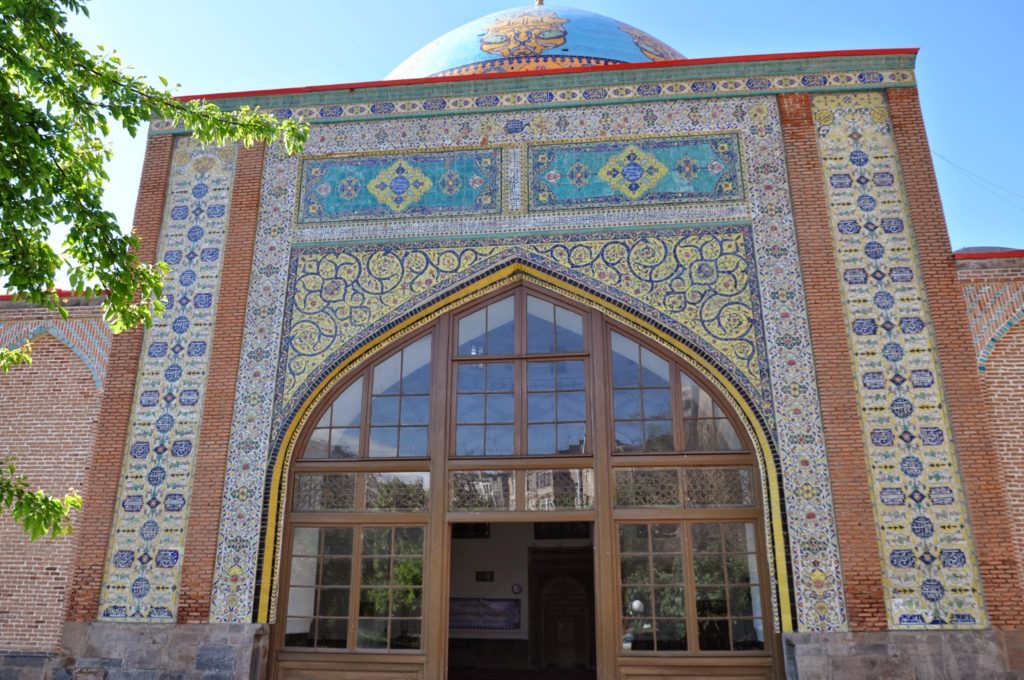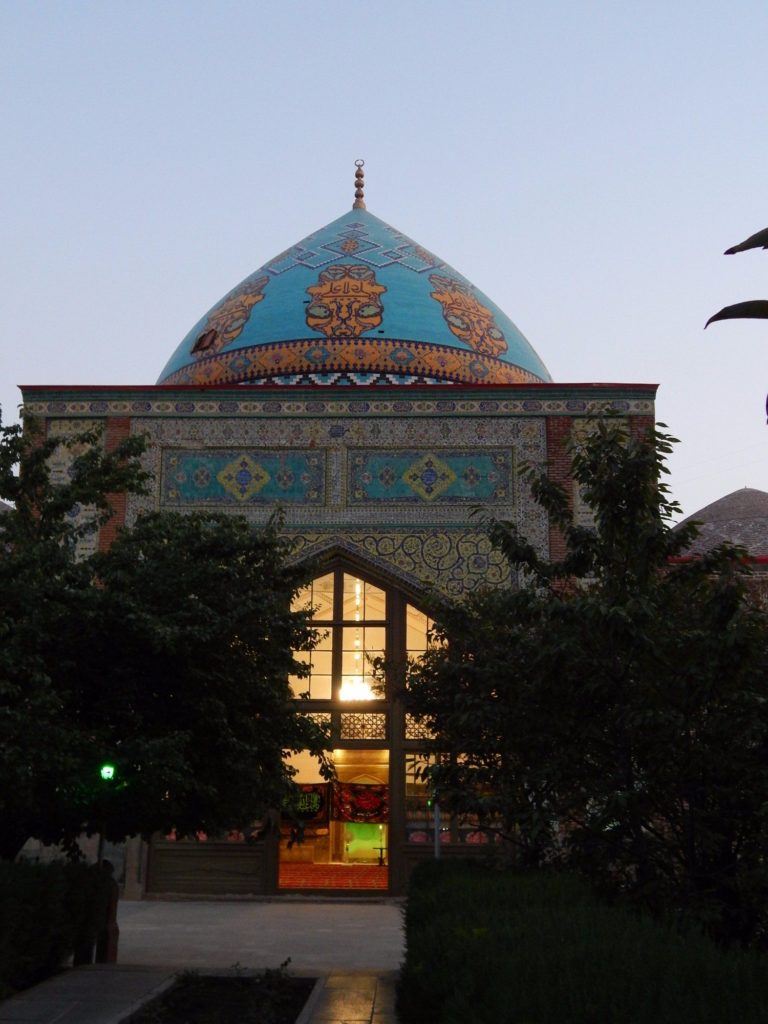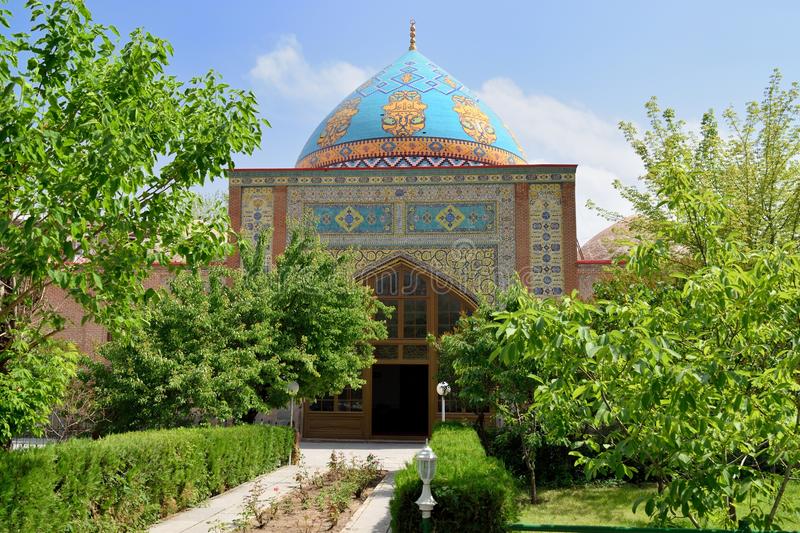Walking along the streets of Yerevan you can notice many churches. All of them are cultural heritage. Studying the past of each church people can learn about the history of that time. But, among the churches and monasteries, there is a mosque where Muslim people pray. After the adoption of Christianity, day by day people established lots of churches. After the invasions and other historic events, Armenia was a country led by non-Armenian people. Anyways, a mosque next to the churches proves the fact that Armenian people respect the religions of other nations. Blue Mosque is an obvious representation of it.
The History of Blue Mosque, Yerevan
Husein-Ali Khan – independent Sardar of Yerevan – established Blue Mosque or Gyoy-Jami in 1766. On the front part of the southern gate, the constructor left an inscription where he mentioned his name and the date of establishment of the mosque. Shahkhatunyants read the date of the establishment of the mosque in 1186, instead of 1179. And, Lynch says that the scholars ascribe the date of the establishment of the mosque in the time of Nadir-Shah (1736-1747).
The History of Mosques in Yerevan
It is hard to find out how many mosques Muslim residents of Erivan-Yerevan of Eastern Armenia had in the period of whole the history. But, it is known that at the beginning of 19th century there were 19 mosques in Yerevan. According to Tadevos Hakobyan, the mosques of Yerevan were Persian-Arabic (also Tartarian) monuments from the architectural perception.
Two of the mosques were in the area of the Yerevan fortress, and other six were just in the city. Many Christian travellers reported about the mosques in Shahar. Some of them were Lynch, Lachinov, Uvarova, Jarden and others.
Jarden’s Inscription
Describing Erivan, Jarden mentioned only one half-destroyed mosque. The name of it was Def-Sultan. Here is his citation “In front of the episcopal residence there is a big market and next to it there is a mosque. That mosque is made of brick and is half-damaged. It got its name from the founder Def-Sultan”. In the further period, there isn’t a mosque with that name in historical sources. Probably, the mosque having a name of Def-Sultan was in the place of Gyoy-Jami (Blue Mosque). The destructive earthquake damaged it. Blue Mosque was one of the most famous and luxurious mosques of Erivan-Yerevan.
Lynch’s Inscription
Other outstanding mosques of Haji Novruz Ali bek and Zal Khan were in Shahar central quarter. And in the back parts of the city, there were small and unremarkable mosques of Damirbulaghi. On the doors of the mosque of Zal khan, there is a common inscription about the date of its construction. According to Lynch the date of the establishment is 1687.
Here Lynch marks that the mosque of Zal Khan was smaller than Gyoy-Jami< but it had similarity and a yard with fence for taking rest.
There were two mosques in the fortress of Yerevan. It is worth mentioning that Rajip pasha built one of those mosques, when Turks occupied Yerevan, in 1727. It was a big construction on four pillars and it had an outstanding look. Considering the fact that Turks were Shia Muslims, after the occupation of Persians the mosques became a place where they kept their weapons. In 1827 October 1 Russians occupied Yerevan and in the honour of their victory, they made the mosque Orthodox Church.
Abas-Mirza Jami Mosque
Another remarkable mosque is Abas-Mirza Jami. Hussein Khan who was the last Sardar of Yerevan built the mosque. It got its name after Abbas Mirza- prince of Atropatene. The front part and the dome of the mosque was in faience. This style was characteristic of Persian and Arabic architecture.
It is interesting that the Turkish mosque and the mosques having the name of Abbas Mirza survived with Gyoy Jami till our days. But, in the 30s by the order of Russia, all the monuments and churches were destroyed, including all the mosques of Yerevan, except Gyoy Jami (Blue Mosque).
The Description of Blue Mosque
Blue Mosque belongs to the mosques that have Shia belief. It was not only the most beautiful and magnificent but also the biggest. The dome and most of the walls are covered by blue faience.
The constructions in southern and northern parts are all in blue. Next to it and in front of it, there are a number of small institutions and cabins. There is a square large yard surrounding the mosque. In the centre of it, there is a little basin. The mosque has three entrances. Two little ones are in the eastern and western part and big entrance is in the southern part. It consists of three arched halls. On the highest hall in the centre, there is the dome. Next, to it, other two halls are smaller and have a lower ceiling. The halls generally have no decoration and simple style. The furniture is also simple. Only the windows that are looking to the garden have decorations. Their ornaments are colourful glasses with eastern patterns. There is a little construction for praying in the northern side.
Gurgen Mahari
“Very often, me and Axel Bakunts were being here and going to Blue Mosque for drinking “Persian tea”. – Yerevan Charsu market, – said he and looked around, – can you imagine what will happen to these places in 50-60s? – said he, thought and concluded, – you won’t recognize, Abovyan were in these places 100 years ago. But if he passed by these places today, it wouldn’t surprise him, he would recognize. Nevertheless, whatever you see in 50-60s will become just a memory” said Gurgen Mahari smiling.
Mkrtich Armen
“Near to the market, in the square, the big building of Blue Mosque is standing. It has high walls on which there are small windows. Blue Mosque doesn’t seem to be interesting with its three walls at night. But the fourth, front wall is different. It is decorated with colourful shreds. The parts that are covered with colourful shreds shine at night and when it’s a sunny day. Two little gates of the mosque are always closed. Only the front door is open. From there you can go to the yard. There are many trees and flowers. The southern part of the yard is the main mosque, On the eastern and western walls, there are 20-24 small doors which are similar to each other. Those are the cabins. Nowadays no pilgrim comes here, and Persian and Turk craftsmen, workers live in the cabins”.
How Does It Look Today?
From the descriptions of popular people like Gurgen Mahari and Mkrtich Armen, we could understand that there was a market near to the mosque. That market exists till now. But, the time changes everything. The market and the look around it is changed too. Walking along Mashtots street we can notice a high wall all in blue. But, going near to it the colours in it.
In front of the mosque, there is a shopping mall. The simple market is changed into a large mall, where one can find everything he/she wants: clothes, food, cafe, restaurants.











Leave a Comment